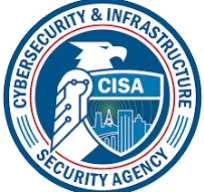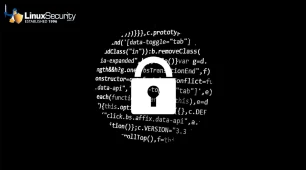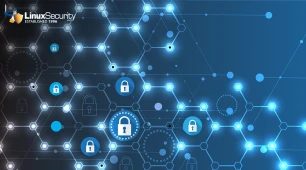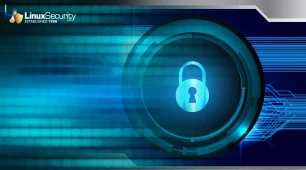
The Cybersecurity and Infrastructure Security Agency (CISA) recently conducted an in-depth Red Team Assessment (RTA) to enhance cybersecurity in US critical infrastructure sectors. One critical infrastructure organization requested this assessment, which took roughly three months. Its primary purpose was to test its cybersecurity detection and response capabilities by simulating real-world threat scenarios similar to what might be encountered by potential cyber adversaries.
The Red Team Assessment (RTA) was carefully created with several specific goals. One key objective was to gauge an organization's cybersecurity readiness by testing its ability to detect and respond to malicious cyber activities while simulating real-world threats and sophisticated attack tactics employed by potentially malicious actors. Through simulation, the RTA sought to identify vulnerabilities within its network, precisely weaknesses that require improvement, and provide actionable insights and strategies to boost security measures against potential threats. In this article, I'll examine how this RTA was conducted, technical considerations impacting Linux admins, notable findings from the assessment, and CISA's suggested mitigation strategies for organizations looking to improve their cybersecurity posture.
Understanding the Conduction of This Red Team Assessment
CISA's Red Team Assessment (RTA) involved several phases. First, the red team conducted reconnaissance by gathering open-source intelligence about an organization's network, defensive tools, and personnel. They then attempted spearphishing campaigns where targeted emails were composed and sent out to gain entry, though these attempts proved initially ineffective. Red Team eventually entered the organization by exploiting an expired web shell from a third-party security assessment discovered during the survey of its external IP space. Once they gained initial access, the red team quickly escalated privileges. It moved from the demilitarized zone (DMZ) into the internal network, eventually breaching it using misconfigured resources and inadequate defense measures, giving it access to sensitive business systems.
Technical Considerations Affecting Linux Admins
 Timeline of Red Team Cyber Threat Activity (Source: CISA)Red Team Assessment gave Linux administrators critical technical details that underscored its value. Initial access gained via exploiting an existing vulnerability on a web server highlighted the necessity for regular patching and monitoring web-facing services. Credentials were also discovered due to an improperly configured Network File System (NFS) share, underlining the importance of employing secure configuration practices. Red Team's use of multiple implants across various hosts also exposed the importance of thorough network traffic inspection and robust host-based defenses to detect and neutralize persistent threats efficiently, underscoring the importance of proactive security measures within Linux environments.
Timeline of Red Team Cyber Threat Activity (Source: CISA)Red Team Assessment gave Linux administrators critical technical details that underscored its value. Initial access gained via exploiting an existing vulnerability on a web server highlighted the necessity for regular patching and monitoring web-facing services. Credentials were also discovered due to an improperly configured Network File System (NFS) share, underlining the importance of employing secure configuration practices. Red Team's use of multiple implants across various hosts also exposed the importance of thorough network traffic inspection and robust host-based defenses to detect and neutralize persistent threats efficiently, underscoring the importance of proactive security measures within Linux environments.
Examining the Red Team Assessment Discoveries & Remarkable Findings
CISA's Red Team Assessment revealed several notable findings. A significant issue related to deficient technical controls within an organization is their overreliance on host-based endpoint detection and response solutions while neglecting comprehensive network-layer defenses. CISA identified that staff had insufficient training. Ongoing IT personnel training is essential to creating secure environments and quickly detecting threats. Leaders' failure to prioritize vulnerabilities identified by the cybersecurity team showed a disparity between risk assessment and impact evaluation, necessitating an all-encompassing and proactive cybersecurity program within the organization. These results underscore the necessity of an ardent stance against cybersecurity within any business entity.
CISA's Suggested Mitigation Strategies
 CISA proposed various mitigation strategies to address the issues identified. They proposed strengthening network layer security by implementing robust defenses to supplement existing EDR solutions and enhance threat detection and mitigation capabilities. They also stressed the significance of continuing training and resources, advocating for investments in staff education to boost technical competencies, familiarity with system components, adequate management support for cybersecurity teams, and engaging leadership to participate in proactive risk evaluation and management activities.
CISA proposed various mitigation strategies to address the issues identified. They proposed strengthening network layer security by implementing robust defenses to supplement existing EDR solutions and enhance threat detection and mitigation capabilities. They also stressed the significance of continuing training and resources, advocating for investments in staff education to boost technical competencies, familiarity with system components, adequate management support for cybersecurity teams, and engaging leadership to participate in proactive risk evaluation and management activities.
CISA also stressed the necessity of secure software development, encouraging software manufacturers to adopt secure coding practices, integrate security into their architecture design, and eliminate default passwords. They further recommended mandating multi-factor authentication (MFA) for privileged users using phishing-resistant methods to defend against unauthorized access. Such recommendations demonstrate that organizations and software manufacturers share equal responsibility to ensure that systems can stand up against evolving threats.
Our Final Thoughts on CISA's RTA Initiative
The CISA RTA provides invaluable insights into critical infrastructure organizations' cybersecurity readiness. It offers technical and organizational improvements emphasizing technical vulnerabilities, and CISA recommends mitigation strategies to strengthen cyber defenses against adversarial infiltration or data compromise attempts. As threats evolve, ongoing assessments and enhancements remain vital in protecting national critical infrastructure against growing cyber risks.
















